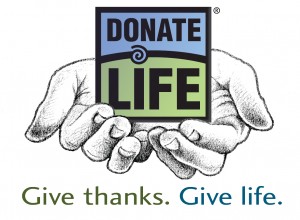Hope springs eternal when looking for treatments for this disease. There seems every month now that a new approach is in the works. This work by Dr. Disney and staff focuses on small molecules that will interface and destroy the RNA that are clogging the cells and causes these foci that seem instrumental in causing Myotonic Dystrophy. By targeting them and breaking them up this may give a treatment for the disease. Small molecules (Drugs) are pretty well known and understood by the medical community. So another approach. Lots of promise… but still we wait for more advances and clinical trials which are always in the future.
Richard
Scripps Florida Scientists Create New Approach to Destroy Disease-Associated RNAs in Cells
As Proof of Principle, Team Creates Molecule that Corrects Myotonic Dystrophy in Living Cells
JUPITER, FL, December 20, 2012 – Scientists from the Florida campus of The Scripps Research Institute (TSRI) have developed a new approach to alter the function of RNA in living cells by designing molecules that recognize and disable RNA targets. As a proof of principle, in the new study the team designed a molecule that disabled the RNA causing myotonic dystrophy.
The study, published online ahead of print on December 20, 2012 by the journal Angewandte Chemie, reports the creation of small molecules that recognize disease-associated RNAs, targeting them for destruction. Since small molecules are cell-permeable, the approach could have benefits over traditional methods of targeting RNAs for degradation, such as antisense or RNA interference (RNAi).
“We’re excited about these results,” said Matthew Disney, an associate professor at TSRI who pioneered the research. “This approach may allow for the inactivation of many cellular RNAs by small molecules and potentially lead the way to a whole range of novel therapeutics.”
It’s well known that gene expression can be controlled by triggering the degradation of messenger RNA—the blueprint for the production of proteins. This is accomplished through the recruitment of compounds that cleave or split the molecule. While several compounds can induce RNA cleavage in vitro, this has not been accomplished efficiently in living cells—until now.
In the new study, Disney and Research Associate Lirui Guan attached a rationally designed small molecule that targets the RNA that causes myotonic dystrophy type 1 with a molecule that produces hydroxyl radicals. Upon the small molecule’s recognition of the target, a hydroxyl radical was released that cleaved the disease-associated RNA, alleviating the disease-associated defects. Disney noted that, despite the compound’s producing a highly reactive species, the compounds are non-toxic at relatively effective doses.
The team accomplished this feat through what Disney calls a bottom-up approach to targeting RNA.
“We first identified the preferred RNA structural elements or motifs that bind to small molecules,” he said. “Then we looked at these elements in RNAs that cause disease and designed a binding molecule with increased affinity and specificity for those elements.”
Myotonic dystrophy type 1 involves a type of RNA defect known as a “triplet repeat,” a series of three nucleotides repeated more times than normal in an individual’s genetic code, resulting in a number of protein splicing abnormalities. Symptoms of this variable disease can include wasting of the muscles and other muscle problems, cataracts, heart defects and hormone changes.
The applications for this new approach could include cancer treatment in conjunction with other therapies, Disney said. The approach could also be used to create chemical probes of RNA function or to develop tools to probe RNA structure—provided, of course, that the RNA-binding preferences of the small molecules involved were well defined.
The study, “Small Molecule-Mediated Cleavage of RNA in Living Cells,” was supported by the National Institutes of Health (Grant number: R01-GM079235) and TSRI. For more information on the study, see http://onlinelibrary.wiley.com/doi/10.1002/anie.201206888/abstract.



